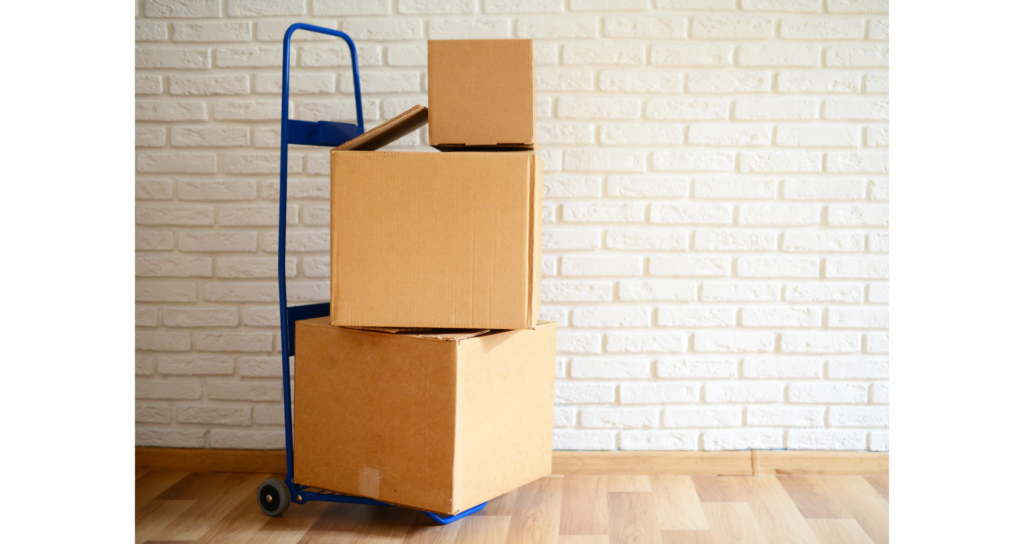Moving is often one of life’s most stressful experiences, with endless to-do lists, scattered boxes, and tight deadlines adding to the chaos. Many find themselves frantically packing the night before moving day, overwhelmed by the sheer volume of tasks. However, moving doesn’t have to be this way. Proper planning can transform the process into an organized and manageable experience.
Starting early is the foundation of a successful move. It allows you to break tasks into smaller, manageable steps, reducing last-minute stress and providing time to address unexpected challenges. Decluttering is a great place to begin—decide what to keep, donate, or discard to lighten your load and create a fresh start in your new space. Early preparation also gives you time to research and compare moving companies, ensuring you find one that meets your needs and budget.
By planning ahead, you can streamline your move, save time, and stay organized. With thoughtful preparation, moving can be a smoother, less stressful experience.
8 Weeks Before Moving: Laying the Foundation
The first step to a successful move begins long before packing boxes. Laying the groundwork eight weeks ahead of your moving day ensures you have ample time to organize, plan, and make critical decisions. This stage is all about preparation, starting with decluttering, budgeting, and reaching out to the right parties. Here’s how to get started:
Declutter Your Home
Moving is the perfect opportunity to assess your belongings and decide what truly matters. Start room by room, sorting items into four categories: keep, donate, sell, or discard. Practical tips include:

- Keep: Identify items you use regularly or have significant sentimental value.
- Donate: For gently used clothes, furniture, or appliances, consider donating to local charities or thrift stores.
- Sell: For higher-value items you no longer need, hold a garage sale or list them on online platforms like Facebook Marketplace or eBay.
- Discard: Dispose of broken, outdated, or unusable items responsibly. Check local regulations for hazardous materials like paint or electronics.
Decluttering not only lightens your load but also reduces moving costs, as movers typically charge based on weight or volume. A streamlined inventory also means a smoother unpacking process in your new home.
Research Moving Companies
Finding a reliable moving company is crucial for a stress-free experience. Begin by asking for recommendations from friends or family and reading online reviews on platforms like Yelp or Google. Request quotes from at least three companies, ensuring they offer in-person or virtual estimates.
When comparing movers, consider factors like:
- Availability on your moving date.
- Services offered (e.g., packing, storage).
- Insurance coverage and licensing (check the U.S. Department of Transportation for interstate moves).
Booking early secures better rates and availability, especially during peak moving seasons like summer.
Create a Moving Budget
Budgeting helps you keep track of expenses and avoid unexpected costs. Typical moving expenses include:
- Moving company fees.
- Packing supplies like boxes, tape, and bubble wrap.
- Travel costs, such as fuel or flights.
- Utility setup fees at your new home.
To save money, look for free packing supplies or consider a DIY move if feasible. Plan for contingencies, such as tipping movers or handling last-minute expenses.
Notify Important Parties
Informing the right people and organizations about your move is essential. Start with:
- Landlord: Provide notice according to your lease terms.
- Utilities: Schedule disconnection at your current home and reconnection at your new address.
- Subscriptions: Update services like magazines, meal kits, or streaming platforms.
- Schools and Employers: Notify your children’s school and your workplace, if applicable.
For a smooth transition, create a checklist of parties to notify and contact them early to avoid service interruptions or delays. Many organizations allow you to update your address online, saving time and effort.
By taking these steps eight weeks ahead of your move, you’ll set a solid foundation for a well-organized and stress-free relocation journey.
6 Weeks Before Moving: Organizing the Details
With six weeks to go, it’s time to start tackling the details that will streamline your moving process. This stage focuses on gathering supplies, beginning the packing process, and planning ahead for potential work disruptions. By staying organized now, you’ll make the weeks leading up to moving day far less stressful.
Order Packing Supplies

Packing requires a range of supplies to keep your belongings safe and organized during the move. Essential items include:
- Boxes: Get a mix of small, medium, and large boxes, as well as specialty boxes for items like dishes and wardrobes.
- Tape: Invest in strong packing tape to secure boxes effectively.
- Bubble Wrap and Packing Paper: Protect fragile items like dishes, glassware, and electronics.
- Markers and Labels: Use these to clearly identify box contents and their intended rooms.
For affordable options, check local retailers, hardware stores, or online marketplaces. Some grocery stores and liquor stores may give away boxes for free. Additionally, reuse boxes from previous purchases or ask friends and family for spares.
Begin Packing Non-Essentials
Packing early allows you to work gradually, reducing last-minute stress. Start with non-essential items you won’t need before the move, such as:
- Seasonal Clothing: Pack winter coats, boots, or swimsuits if they’re not currently in use.
- Decorative Items: Safely pack pictures, vases, and knick-knacks.
- Books and Media: Box up books, DVDs, and other collections that aren’t in daily rotation.
Packing Tips for Fragile Items:
- Wrap delicate items individually in bubble wrap or packing paper.
- Use crumpled paper or towels to fill empty spaces in boxes and prevent shifting.
- Clearly mark boxes containing fragile items with “FRAGILE” in bold letters.
Label Boxes Clearly
Detailed labeling is essential for an efficient unpacking process. On each box, include:
- Contents: List the main items in the box (e.g., “Kitchen – Plates and Glasses”).
- Destination Room: Write the room where the box belongs in your new home (e.g., “Bedroom,” “Bathroom”).
- Special Instructions: Note if a box contains fragile items or needs to be unpacked first.
Consider using color-coded labels or stickers for each room to make it easy for movers to place boxes in the correct locations.
Request Time Off Work
If your moving day falls on a weekday, plan ahead to take time off work. Discuss your move with your manager and request vacation days as early as possible to avoid conflicts with work schedules.
Tips for Preparing for Work Disruptions:
- Complete urgent projects and delegate tasks to colleagues.
- Set up an out-of-office email response for moving day.
- If working remotely, ensure your internet and workspace are ready in your new home.
By focusing on these organizational tasks six weeks before moving, you’ll stay on top of your schedule and avoid unnecessary stress. This is the time to lay the groundwork for a seamless transition to your new home.
4 Weeks Before Moving: Finalizing Plans
At the four-week mark, the countdown to moving day begins to feel more real. This is when you should finalize crucial logistics to ensure a smooth transition. By confirming your moving company, setting up utilities at your new home, and updating your address with the necessary parties, you can stay ahead of potential hiccups. Here’s how to tackle these tasks effectively.
Confirm Moving Company
If you haven’t already, now is the time to finalize your moving company and confirm all the details. Here are important questions to ask before signing the contract:
- Insurance Coverage: Does the company offer basic liability insurance or full-value protection for your belongings?
- Additional Charges: Are there extra fees for things like stairs, elevators, or heavy items?
- Estimated Delivery Time: What is the expected timeline for your items to arrive?
- Cancellation Policy: What happens if you need to reschedule or cancel your move?
Once everything is in place, review the written agreement carefully to ensure all terms match your understanding. Confirm the date, time, and any special requests, such as handling fragile or oversized items.
Set Up New Utilities
Having utilities ready at your new home is crucial for a comfortable move-in day. Use this checklist to ensure nothing is overlooked:
- Electricity and Gas: Contact your utility providers to schedule disconnection at your old home and activation at your new one.
- Water and Sewer: Arrange for service transfer with your local municipality.
- Internet and Cable: Schedule installation early, as appointments can fill up quickly.
- Trash and Recycling: Check with your new city or county for garbage collection services.
To avoid service interruptions, set up utilities to overlap by at least a day between your old and new homes. Keep account numbers and customer service contacts handy in case of issues.
Update Address
Updating your address is an essential task that impacts everything from mail delivery to legal documents. Here’s a detailed list of places to notify:
- Post Office: Submit a change of address online or in person to redirect mail.
- Banks and Credit Cards: Update your address to ensure timely statements and fraud alerts.
- Driver’s License and Vehicle Registration: Notify the DMV to comply with state laws.
- Insurance Providers: Contact health, auto, and home insurance companies to update your policy details.
- Subscriptions: Update addresses for magazines, streaming services, and meal kits.
- Employer: Provide your updated address for payroll and benefits purposes.
For a seamless transition, start with essential services like the postal service and financial institutions. Consider setting reminders for any smaller accounts or memberships you might overlook, such as loyalty programs or alumni associations.
By finalizing these plans four weeks ahead of your move, you’ll minimize surprises and feel more prepared for the transition. These steps lay the foundation for a hassle-free moving day and a smooth start in your new home.
2 Weeks Before Moving: Final Preparations
As moving day approaches, final preparations are key to ensuring everything runs smoothly. Two weeks out is the perfect time to pack essential items, prepare appliances for transport, and safely dispose of hazardous materials. These steps will keep the process organized and stress-free.
Pack Essentials
Creating an essentials box is one of the smartest moves you can make for a hassle-free moving day. This box should contain all the items you’ll need immediately before, during, and after the move. Here’s what to include:
- Toiletries: Toothbrush, toothpaste, soap, shampoo, and other daily hygiene products.
- Electronics and Chargers: Pack your phone, laptop, and any chargers you’ll need to stay connected.
- Snacks and Drinks: Include granola bars, nuts, water bottles, and other non-perishable items for quick energy boosts.
- Clothing and Linens: Pack a change of clothes and basic linens like towels and pillowcases.
- Medications and First Aid: Ensure any prescription medications and a small first aid kit are easily accessible.
- Important Documents: Include IDs, contracts, financial documents, and any paperwork related to the move.
Having an essentials box ensures that you’re not frantically searching through boxes for necessities during the first day or night in your new home.
Prepare Appliances
Properly preparing appliances for transport protects them from damage and ensures they’ll function in your new home. Follow these steps:
- Unplug and Defrost Refrigerators/Freezers: Unplug at least 24–48 hours before moving day to allow for defrosting. Clean thoroughly to prevent odors.
- Clean and Dry Washing Machines: Run a cleaning cycle, disconnect hoses, and dry them thoroughly to prevent leaks. Secure the drum to avoid movement during transport.
- Disconnect Dishwashers: Turn off the water supply, disconnect hoses, and drain excess water.
- Prep Small Appliances: Clean items like microwaves, blenders, and toasters. Remove any loose or breakable parts, wrapping them separately.
- Secure Cords and Components: Tape cords to each appliance and place manuals in a labeled bag for easy setup later.
These steps not only protect your appliances but also reduce the risk of damage to other belongings during the move.

Dispose of Hazardous Items
Hazardous materials like paint, chemicals, and batteries cannot be transported by most moving companies due to safety regulations. Proper disposal is essential for both safety and environmental protection. Here’s how:
- Paints and Chemicals: Check with local waste management or recycling centers for drop-off locations. Many municipalities offer special collection days.
- Batteries: Drop off old batteries at recycling programs available at hardware or electronic stores.
- Cleaning Supplies: If unopened, consider donating them to a neighbor or local organization. Otherwise, follow disposal guidelines on the labels.
- Propane Tanks and Fire Extinguishers: Contact local hazardous waste facilities or retailers for safe disposal options.
Handling these items early ensures a safer move and prevents delays caused by trying to manage them at the last minute.
With these final preparations, you’ll be fully ready for moving day. Packing essentials, prepping appliances, and disposing of hazardous items will make the transition smoother, allowing you to focus on settling into your new home.
Moving Day: Staying Organized
Moving day is the culmination of weeks of planning, and staying organized is key to ensuring everything goes smoothly. By completing a final walkthrough of your old home, effectively directing movers, and thoroughly inspecting your new home, you can tackle moving day with confidence. Let’s break down these steps.
Do a Final Walkthrough
A final walkthrough ensures that nothing is left behind in your old home. Use this checklist to stay thorough:
- Open Every Drawer and Cabinet: Check all rooms, including the kitchen, bathrooms, and closets, for overlooked items.
- Inspect Storage Areas: Don’t forget attics, basements, garages, and sheds. These spaces often house forgotten belongings.
- Turn Off Utilities: Ensure lights, faucets, and appliances are turned off or disconnected.
- Check for Trash: Remove all trash or leftover packing materials to leave the space clean.
- Take Photos: Document the condition of the home, especially if you’re renting or selling, to avoid disputes later.
A meticulous walkthrough not only provides peace of mind but also ensures you leave your old home on good terms.
Direct Movers
Guiding movers efficiently saves time and reduces the risk of mishandled items. Here’s how to stay organized:
- Label Rooms in the New Home: Use labeled signs or sticky notes on doors to help movers place boxes and furniture correctly.
- Color-Coding: Match colored labels on boxes to corresponding rooms for quick identification.
- Provide Clear Instructions: Walk movers through the home before unloading begins, pointing out any fragile items or specific placement requests.
- Stay Available: Be on-site to answer questions or provide directions, but avoid micromanaging.
Efficient communication with movers minimizes confusion and helps the day flow seamlessly.
Inspect Your New Home
Before unpacking, take time to inspect your new home. This step ensures everything is in working order and addresses any immediate issues:
- Check Utility Functionality: Test water faucets, light switches, heating/cooling systems, and appliances to confirm they’re operational.
- Document Damages: Walk through each room and note any pre-existing damages, such as scratches, leaks, or faulty fixtures. Take photos or videos as evidence, particularly if you’re renting.
- Secure Entry Points: Ensure all doors and windows lock properly, and replace locks if needed for added security.
- Locate Key Features: Identify the circuit breaker, water shut-off valve, and emergency exits in case of future issues.
A thorough inspection not only guarantees a safe and functional living space but also sets the tone for a successful move-in process.
By completing these tasks, you’ll keep moving day under control and minimize stress. A final walkthrough, clear communication with movers, and a detailed inspection of your new home ensure you’re starting this new chapter on the right foot.
Bonus Tips for a Stress-Free Move
Even with meticulous planning, moving day can still be stressful. To help you stay calm and organized, these bonus tips provide practical hacks and reminders to make your move as smooth as possible.
Color-Coded Labeling
Simplify unpacking with a color-coded labeling system. Assign a color to each room in your new home, and place corresponding colored stickers or tape on boxes meant for those spaces. For example:
- Blue for the kitchen
- Green for the living room
- Red for the master bedroom
By using this system, you and your movers can quickly identify where each box belongs. Combine this with clear labels that list the box’s contents for even greater efficiency.
Hire Professional Packers
If packing feels overwhelming, consider hiring professional packers. While this may increase your budget, it can save time and reduce the risk of damaged items. Professional packers have the expertise to handle fragile or valuable belongings, ensuring they’re securely packed for transport.
Ace Interstate Moving top-rated listed moving companies offer packing services as part of their comprehensive moving packages. This option can be especially helpful for long-distance moves or if you’re short on time.
Create a Digital Inventory

A detailed inventory helps you keep track of your belongings during the move. Take it a step further by creating a digital inventory using apps or spreadsheets. Include:
- Photos of each box and its contents
- Descriptions of valuable items
- A checklist to mark items as they’re loaded and unloaded
This not only helps you stay organized but also provides documentation in case of any disputes with movers or for insurance claims.
Stay Hydrated and Take Breaks
Moving day can be physically and emotionally exhausting. Amid the chaos, it’s easy to forget to take care of yourself. Follow these tips to stay energized:
- Stay Hydrated: Keep water bottles readily available for you, your family, and the movers. Avoid excessive caffeine, which can lead to dehydration.
- Pack Snacks: Keep protein bars, fruit, or trail mix on hand for quick, healthy energy boosts.
- Take Breaks: Schedule short breaks every couple of hours to rest and recharge. Moving is a marathon, not a sprint, and pacing yourself is essential to staying focused and stress-free.
Conclusion
Moving doesn’t have to be a chaotic, overwhelming process. With the right planning and preparation, it can be an organized and even enjoyable transition to your next chapter.
From starting early by decluttering and creating a moving budget to finalizing plans, packing essentials, and managing moving day with efficiency, this ultimate moving checklist covers every stage of the process. By following these steps and incorporating bonus tips like color-coded labeling, hiring professional packers, and maintaining a digital inventory, you’ll set yourself up for a smooth and successful move.
Finally, remember that you don’t have to tackle this alone. Partnering with experts like Ace Interstate Moving can significantly reduce the stress of moving by provide you the best moving companies in your area. Their professional services—from packing and transportation to storage and logistical support—ensure that every detail of your move is handled with care and precision.
Ready to take the first step toward a stress-free move? Start your ultimate moving checklist today, and let Ace Interstate Moving be your trusted partner. With their expertise, you’ll not only save time and effort but also gain peace of mind knowing your belongings are in safe hands.







